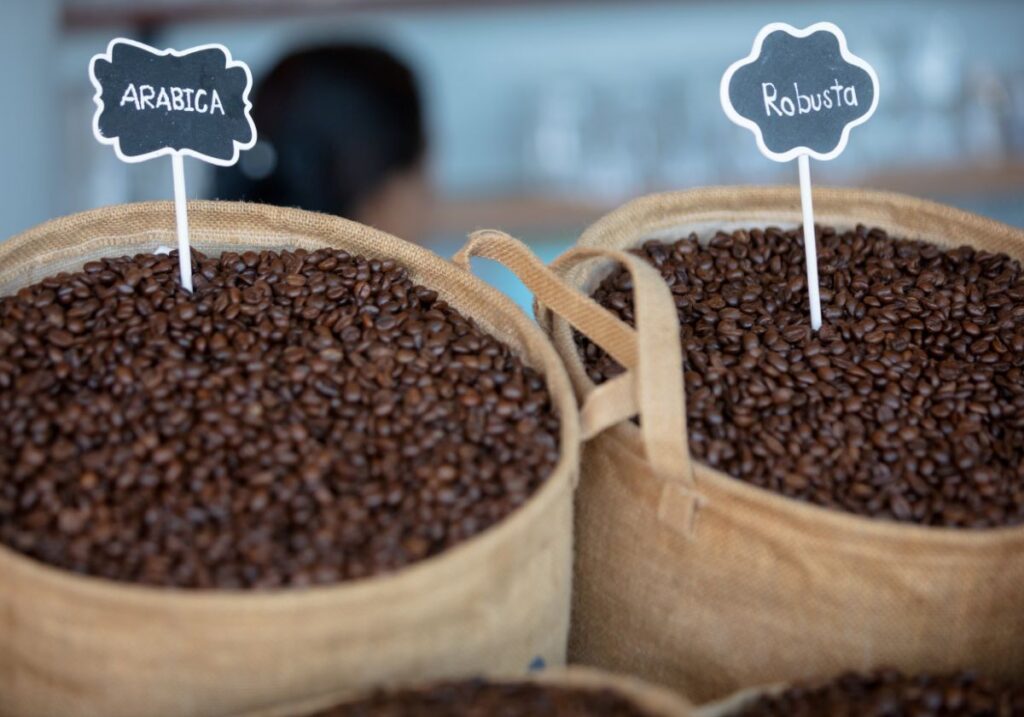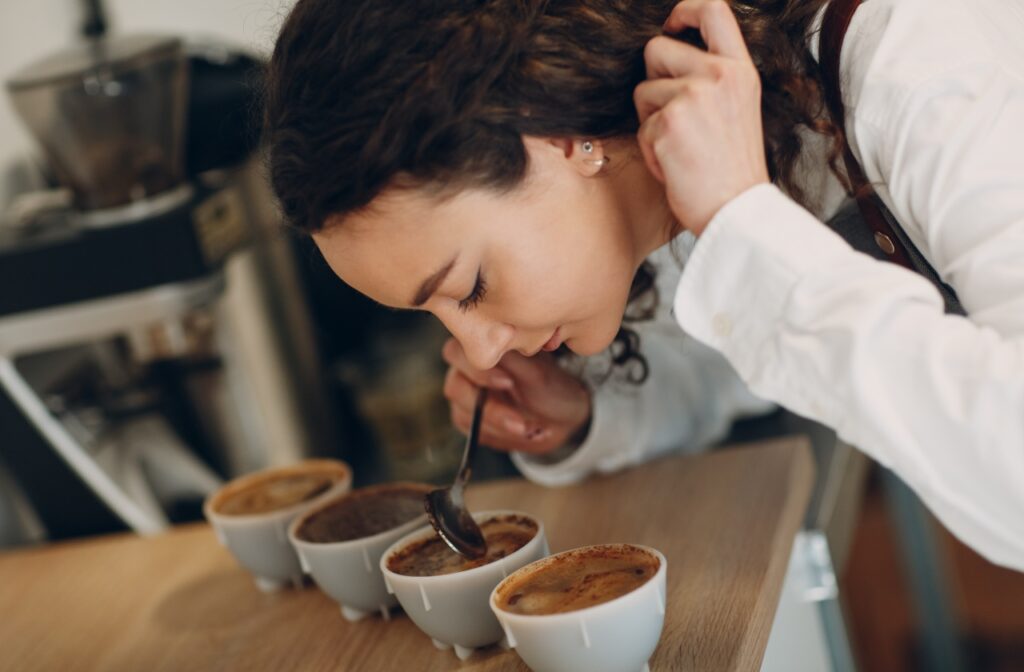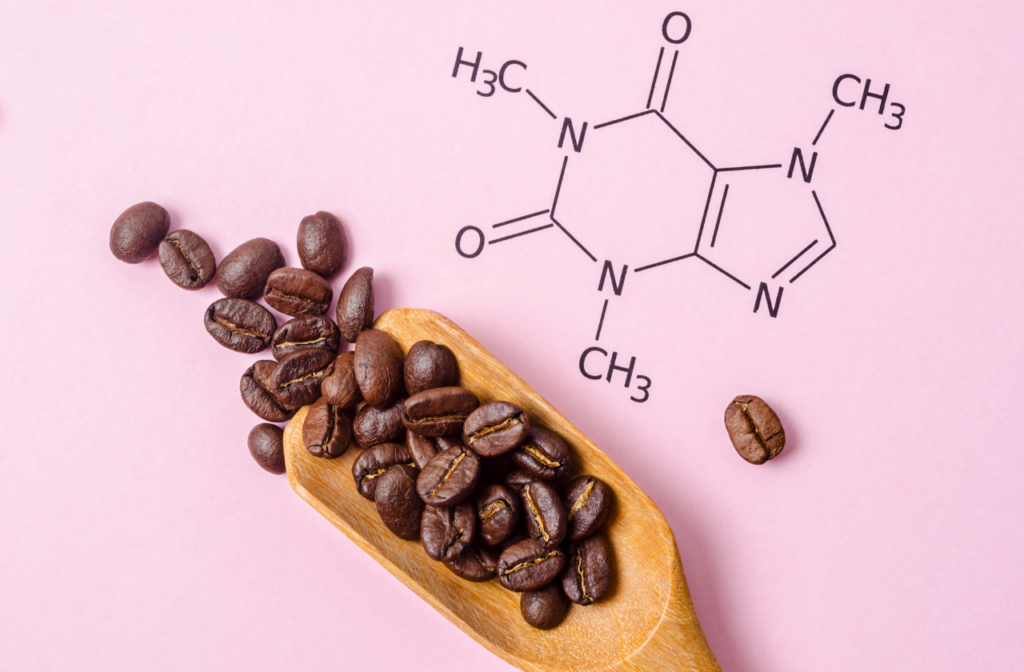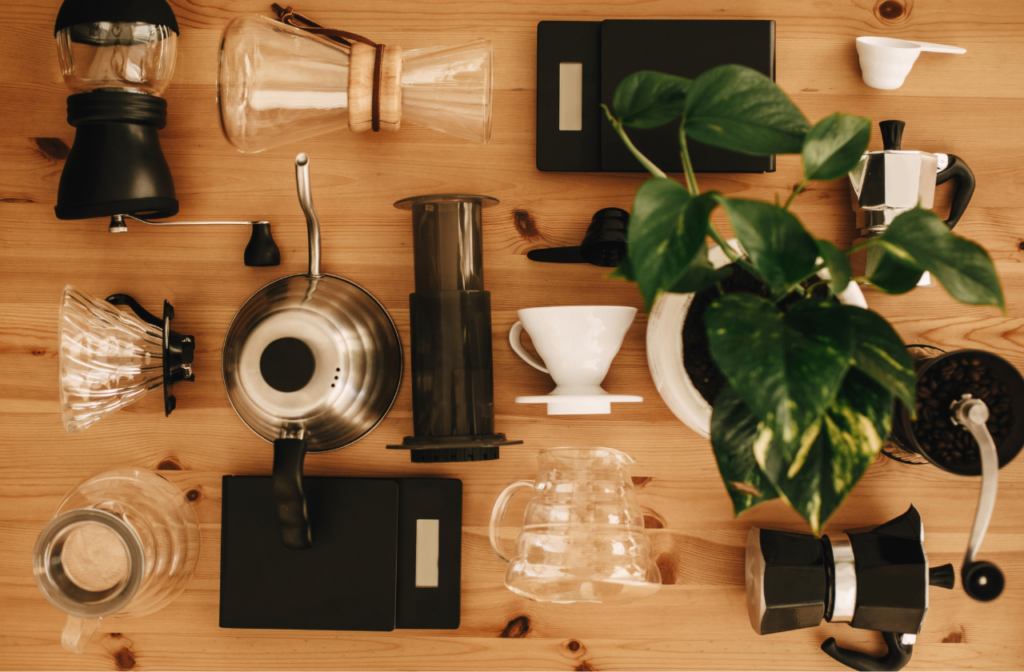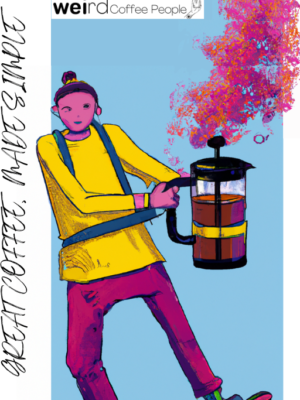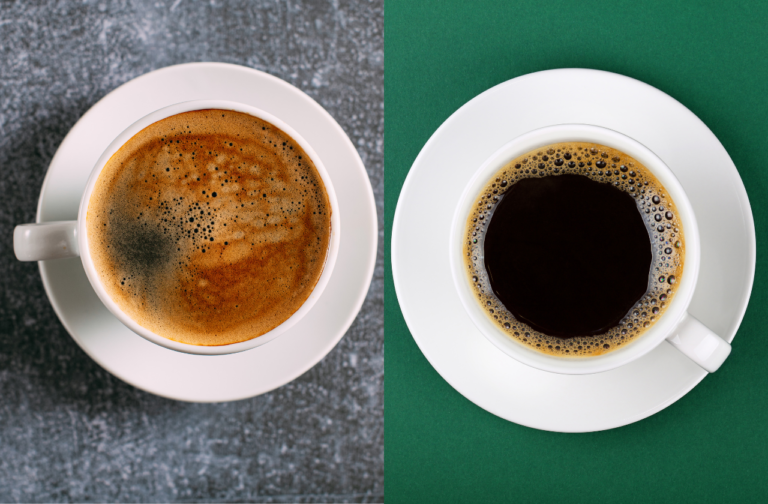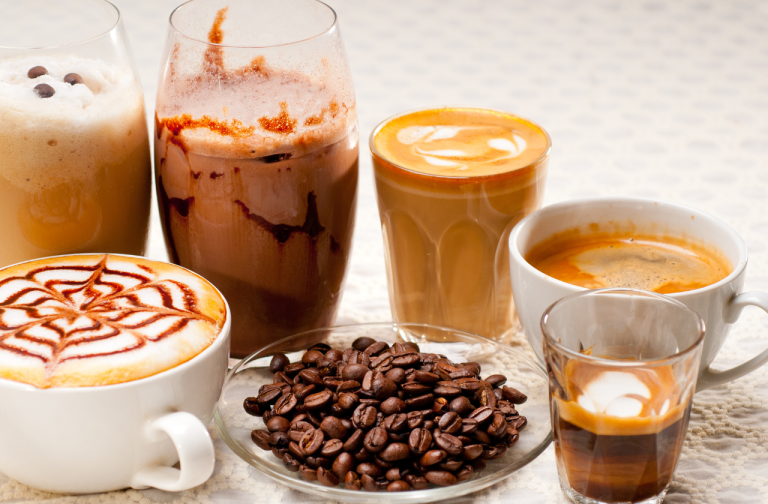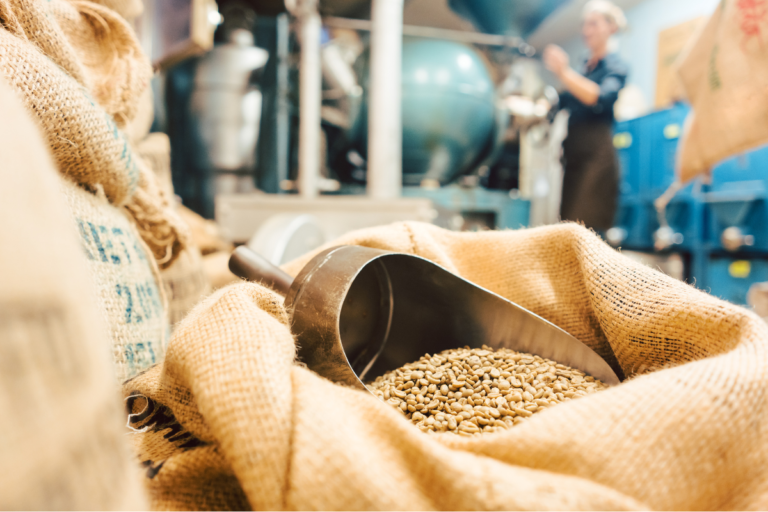The Ultimate Coffee Roast Guide: Exploring Light, Medium, and Dark Beans
As a coffee lover, you know that the taste of your coffee depends on how it’s roasted. Coffee roasting is not just about browning beans; it’s a crucial step that brings out the unique flavors and aromas of the coffee beans.
This article discusses the different types of coffee roasts – light, medium, and dark. Each roast has its own characteristics and offers a very different coffee experience. Understanding these differences can help you pick the perfect cup for your taste.
The Art and Science of Coffee Roasting
Coffee roasting is both a science and an art form, essential for unlocking the full potential of coffee beans. It’s a process that transforms the chemical and physical properties of green coffee beans into roasted coffee products. The roasting process is crucial as it influences the taste, aroma, and color of the coffee.
Roasters need to control the temperature and timing precisely. Even a few seconds can make a significant difference in the flavor. They must balance bringing out the beans’ inherent qualities while imparting the roast’s character. This delicate balance is where the artistry of roasting comes into play.
- Roasting begins with soft green coffee beans with a fresh grassy smell and little to no taste. The magic starts when these beans are heated. They lose moisture and begin to turn yellow.
- As the temperature rises, typically around 3 to 5 minutes into the roasting process, the beans undergo a transformation known as the ‘first crack.’ This is a key moment in roasting where beans expand and crackle, akin to popcorn popping, indicating the start of the coffee development phase. Beans roasted to this point will have a light brown color and a more acidic, brighter flavor profile with prominent floral and fruity notes.
- The “second crack” occurs later in the roasting process, typically around 10 to 15 minutes after the first crack, depending on the desired roast level. At this stage, the cellular structure of the beans further breaks down, resulting in a more pronounced cracking sound, similar to the sound of rice crispies snapping. The second crack signifies the transition from medium to dark roast. Beans roasted beyond this point will have a darker color and a richer, fuller-bodied flavor profile, with pronounced bittersweet notes and reduced acidity.
- Roasters must be attentive as they play a critical role in determining the flavor profile of the coffee. The beans can be roasted to various levels depending on the desired outcome.
- Light roasts may stop just after the first crack, while darker roasts continue until the second crack or beyond.
Types of Coffee Beans and Their Impact on Roasting
Not all coffee beans are created equal. The two primary types of coffee beans, Arabica and Robusta, have distinct characteristics that significantly impact the roasting process.
Understanding the type of coffee bean is vital for roasters, as it guides them in choosing the right roasting profile to enhance the beans’ inherent qualities. Whether it’s a light, bright cup from high-quality Arabica beans or a strong, bold shot from robust Robusta beans, the type of bean sets the foundation for the coffee’s final character.
The beans’ origin, processing method, and specific variety are crucial in determining the roasting approach. Beans from different regions, like Latin America, Africa, or Asia, have unique flavors influenced by their local climate and soil conditions.
How beans are processed – whether washed, natural, or honey-processed – also affects their moisture content and how they respond to heat.
Arabica Coffee Beans
Arabica coffee beans are the most popular and are prized for their smooth, complex flavor profiles and offer more variety in roasting options. They typically grow at higher altitudes, which contributes to their flavor complexity.
Regarding roasting, Arabica beans require a more nuanced approach and a wide range of flavors. They are more sensitive to heat and can develop rich, varied flavors at different roast levels. Light roasts tend to highlight their delicate, acidic notes and can bring out floral and fruity notes, while darker roasts bring out deeper, sweeter flavors, highlighting caramel and chocolate.
Robusta Coffee Beans
Robusta coffee beans are known for their strong, bold flavor and higher caffeine content. They grow at lower altitudes and are more resilient to pests and diseases. Robusta beans have a reputation for a more bitter and less complex taste profile compared to Arabica. In the roasting process, Robusta beans can handle higher temperatures and longer roast times, which helps to reduce their natural bitterness and bring out smoother, richer flavors.
Understanding Coffee Roast Levels
The roast level of coffee is one of the most critical factors influencing its taste. Each roast level brings out different flavors and characteristics from the coffee beans.
While there is a wide range of roast levels, they are generally categorized into three main types:
- light
- medium
- and dark
Light Roast Coffee: Characteristics and Flavor Profile
Light roast coffee, often recognized by its light brown color and absence of oil on the bean’s surface, is known for preserving the unique flavors inherent to the coffee bean. These roasts typically stop just after the first crack in the roasting process, a technique that maintains the bean’s original qualities and complexities.
Light roast coffee offers a unique and diverse experience, ideal for those who want to explore the intricate flavors that coffee has to offer. It’s a roast that respects the bean’s origin, offering a cup as varied and interesting as the regions from which the beans are sourced.
Flavor Characteristics
Light roasts are celebrated for their higher acidity, often perceived as a brightness in the cup. This roast level allows the coffee’s true flavors to shine, offering a more pronounced and diverse range of tastes. Common flavor notes include floral, fruity, and herbal nuances, which vary depending on the bean’s origin. The light roast is ideal for coffee drinkers who appreciate the intricate flavors specific to the coffee’s geographic region.
Body and Acidity
These roasts generally have a lighter body than darker roasts, giving them a more delicate mouthfeel. The acidity in light roasts is not just about sourness; it’s more about a vibrant, lively quality that enhances the coffee’s overall flavor profile.
Aroma and Aftertaste
The aroma of light roast coffee can be quite captivating, often releasing a range of scents from sweet and floral to fruity and spicy. The aftertaste is typically clean and refreshing, leaving a pleasant and memorable taste on the palate.
Common Names
Light roasts are often referred to by names like Cinnamon, Light City, and Half City, which can vary by roaster and region. These names reflect the roast’s light color and the early stage at which the roasting process is stopped.
Ideal Brewing Methods
Light roasts are versatile and can be brewed using a variety of methods. Techniques that allow for a more gradual extraction, such as pour-over or Aeropress, are often preferred as they can highlight the roast’s complex flavor profile more effectively.
Medium Roast Coffee: The Balanced Choice
Medium roast coffee strikes a harmonious balance between the intrinsic flavors of the bean and the characteristics introduced by the roasting process. It’s known for its rich taste and balanced acidity.
Medium roast coffee is the go-to option for many coffee drinkers due to its balanced flavor profile. It offers a delightful compromise, featuring the unique characteristics of the coffee’s origin and the rich flavors developed through roasting.
Color and Surface
Medium roast beans have a more pronounced brown color compared to light roasts and usually don’t have an oily surface. This roast level is typically achieved after the first crack but before the second crack in the roasting process.
Flavor Profile
Medium roasts offer a perfect balance between the bright acidity of light roasts and the intense, bold flavors of dark roasts. They often feature a rounded flavor profile with notes ranging from fruity and spicy to nutty and chocolaty. These roasts retain many of the unique characteristics of the coffee’s origin while also beginning to develop the deeper, sweeter flavors that come from longer roasting.
Acidity and Body
The acidity in medium roasts is more balanced than in light roasts, contributing to a smoother cup. The body is also more pronounced, offering a more substantial mouthfeel than light roasts but without the heaviness of dark roasts.
Aroma and Aftertaste
Medium roasts boast a rich and inviting aroma, often with hints of sweetness and complexity. The aftertaste is satisfying and lingering, making it a versatile choice for various coffee drinks.
Common Names
Medium roasts are often labeled with names like City Roast, American Roast, or Breakfast Roast. These names are indicative of their popularity and appeal in the American coffee market.
Brewing Methods
Medium roasts are incredibly versatile when it comes to brewing methods. They are well-suited for a range of techniques, from drip coffee makers to espresso machines. This flexibility makes medium roasts great for those who enjoy experimenting with different brewing methods.
Weird Coffee Tip: The quality of your coffee is affected by how the beans are stored. They should always be protected from heat, light, moisture, and oxygen. Find out the best ways to keep your coffee beans fresh and full of flavor in this article:
Best Way To Store Coffee Beans
Dark Roast Coffee: Rich and Bold Flavors
Dark roast coffee is for those who prefer a strong, bold cup with rich, deep flavors. This roast level brings out deep, bold flavors that are often smoky and chocolaty. The long roasting process creates a hearty and robust coffee, ideal for a morning kickstart or a comforting afternoon break.
Appearance
Dark roast beans are distinctly darker in color, often a rich, dark brown, and typically have an oily surface. This is a result of the longer roasting process, which brings the oils to the surface of the bean.
Flavor Profile
In dark roasts, the flavors of the roasting process become more dominant, often featuring notes of chocolate, caramel, and a pronounced smokiness. The original flavors of the bean are less noticeable, overtaken by the rich and robust flavors developed during roasting. These roasts have a low acidity and heavy body, offering a hearty cup of coffee.
Common Names
Dark roasts are known by names like Full City, Vienna Roast, and Espresso Roast. These names indicate the deep, intense flavors characteristic of this roast level.
Brewing Methods
Dark roasts are particularly popular for brewing methods like espresso, where their bold flavors and heavy body can stand up to the intensity of the brewing process. They are also well-suited for French press and cold brew methods.
Comparison Table of Coffee Roasts:
| Light Roast | Medium Roast | Dark Roast | |
| Color | Light brown | Medium brown | Dark brown |
| Surface | No oil | No oil | Oily |
| Flavor Profile | Floral, fruity, herbal | Balanced, nutty, chocolaty | Smoky, chocolaty, caramel |
| Acidity | Higher, more pronounced | Balanced | Lower |
| Body | Lighter | Medium | Heavy |
| Roasting Stage | Just after the first crack | After the first crack, before the second crack | Well into or past second crack |
| Common Names | Cinnamon, Light City, Half City | City Roast, American Roast, Breakfast | Full City, Vienna Roast, Espresso Roast |
| Ideal Brewing | Pour-over, Aeropress | Drip, espresso | Espresso, French press, cold brew |
Debunking the Caffeine Myth
A common belief among coffee drinkers is that dark roast coffee contains more caffeine than light roast. However, this assumption doesn’t hold up under scrutiny.
The idea that dark roast coffee has more caffeine than light roast is a myth. The caffeine content in coffee is more influenced by the bean density and brewing method than the roast level. So whether you prefer a light, medium, or dark roast, your caffeine intake will be relatively similar if you measure your coffee by weight.
Caffeine Content by Roast Level
The caffeine content in coffee beans changes very little during the roasting process. Whether the coffee is light, medium, or dark roast, the caffeine level remains relatively constant. The misconception likely stems from the flavor profile of dark roasts, which are bolder and more intense, giving the impression of higher caffeine content.
The Density Factor
The key to understanding this myth lies in the density of the coffee beans. Light roast beans are denser than dark roast beans. When measuring coffee by volume (like using scoops), you end up with more beans (and thus slightly more caffeine) in a scoop of light roast compared to a scoop of dark roast.
However, if you measure by weight, the caffeine content is roughly the same between different roast levels. This difference in density is the main reason behind the misconception regarding caffeine content in various roasts.
Brewing Method Impact
The brewing method can influence the coffee’s perceived strength and caffeine extraction. For example, espresso, often made with dark roasts, is a concentrated coffee form, leading some to believe it has more caffeine. However, this concentration is due to the brewing method, not the roast level.
Brewing Techniques for Different Roasts
How you brew your coffee can significantly affect its taste, and different roast levels can benefit from different brewing methods.
By selecting the appropriate brewing method for your coffee roast, you can enhance the quality of the coffee, leading to a more enjoyable and flavorful cup. Experimenting with different methods for each roast level can also be a fun and rewarding experience.
Here’s a guide to help you match your brewing technique to your preferred roast level.
Light Roasts
Given their complex flavor profile and higher acidity, light roasts are best brewed with methods that allow for a more gradual extraction. This helps to highlight their delicate flavors.
- Pour-Over: Ideal for light roasts as it allows for precise control over the brewing time and temperature, enabling the subtle flavors to shine.
- Aeropress: A good choice for light roasts, providing a clean and nuanced cup.
Medium Roasts
These roasts are incredibly versatile and can be brewed effectively using a wide range of methods. They are a great middle-ground for experimenting with different techniques.
- Drip Coffee Makers: Well-suited for medium roasts, extracting a balanced flavor profile.
- Espresso Machines: Medium roasts work well in espresso machines, offering a balanced shot that’s not too bitter or acidic.
Dark Roasts
With their bold flavors and oily surface, dark roasts are ideal for brewing methods that can handle and complement their intensity.
- Espresso: The concentrated nature of espresso pairs well with the rich and bold flavors of dark roasts.
- French Press: Allows for a full extraction of the dark roast’s robust flavors, and its metal filter doesn’t remove the oils, contributing to a richer cup.
- Cold Brew: Dark roasts are excellent for cold brew, as the long steeping time extracts the deep flavors without the bitterness.
General Tips:
- Water Temperature: Lighter roasts may benefit from slightly higher brewing temperatures to help extract their complex flavors, while darker roasts can do with slightly lower temperatures to avoid over-extraction and bitterness.
- Grind Size: Adjust the grind size according to your brewing method. Finer grinds work well for espresso, while coarser grinds are better for French press and cold brew.
Conclusion
The distinct characteristics of light, medium, and dark roasts, each offering a unique spectrum of flavors and aromas. Understanding these differences is key to appreciating the diverse world of coffee. Whether you prefer the delicate and complex notes of a light roast, the balanced and versatile nature of a medium roast, or the rich, bold flavors of a dark roast, there’s a coffee out there for every palate.
-
Espresso Express eBook
R180,00 -
From Bean To Brew eBook
R450,00 -
Great Coffee, Made Simple
R0,00


